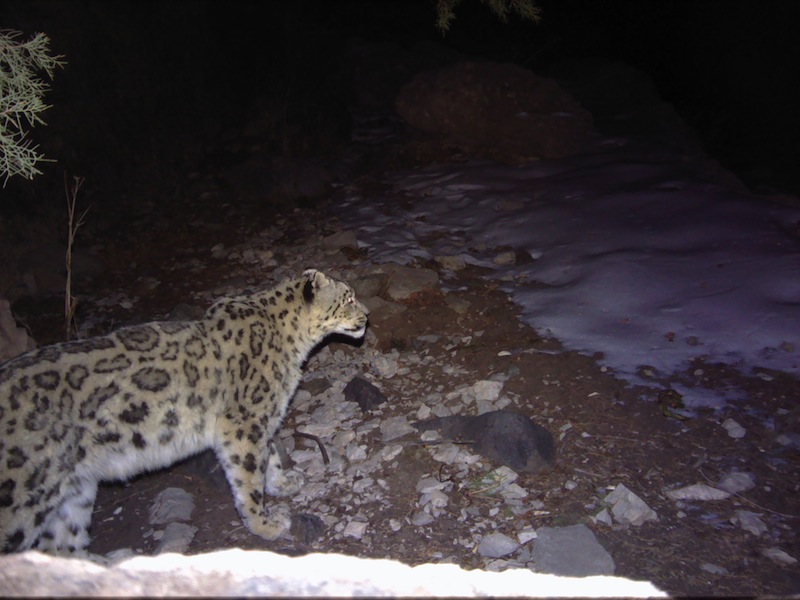Snow Leopards Photographed for the 1st Time in Uzbekistan

A camera trap snapped the first-ever pictures of the elusive snow leopard in Uzbekistan. Even better, it caught not one, but two of the endangered cats on camera.
The new images of the cats released by conservation groups Panthera and the World Wildlife Fund (WWF) confirm that there are at least two individual snow leopards in the Gissar Nature Reserve, a protected part of the Pamir Mountains that can be visited only for scientific research.
Uzbekistan, which is about the size of California, is one of 12 countries in Asia where snow leopards still roam through rugged mountainous terrain. It's estimated that only 3,500 to 7,000 of the endangered cats are left in the wild. [Rare Photos: Snow Leopard Babies in Dens]
Because of their scarcity and elusive nature, snow leopards are rarely photographed. In Uzbekistan, the cats had previously been confirmed only through traditional surveys and rare sightings.
Rangers and biologists collaborating with Panthera and WWF set up the camera trap in Uzbekistan between November and December 2013 to look for snow leopards. Other animals including bears, lynxes, ibexes, wild boars and hares were also caught on camera during the study.
"Panthera has provided over 300 camera traps through partnerships such as this to better document the range of this elusive and endangered cat of central Asia's mountains," Tom McCarthy, executive director of Panthera's snow leopard program, said in a statement. "With an improved understanding of their range and numbers we have a better chance to save them."
Camera traps have allowed researchers to get photos of the cats in their natural habitats from Tajikistan to Siberia. Beyond hidden cameras, conservationists have turned to other technology to track the secretive cats. In November, a 5-year-old snow leopard was outfitted with a GPS collar in Nepal, a first for the country.
Get the world’s most fascinating discoveries delivered straight to your inbox.
Follow Megan Gannon on Twitter and Google+. Follow us @livescience, Facebook & Google+. Original article on LiveScience.


